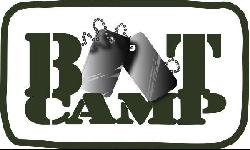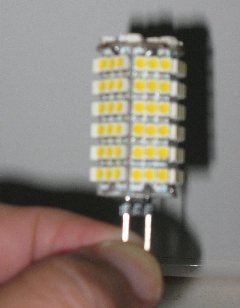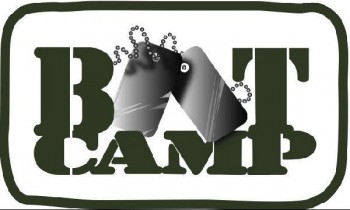Title: 15th Annual Coastal Bend Hamfest
Location: Aransas Pass
Link out: Click here
Description: Keep checking the web site. We have some great plans for this year.
Start Time: 8:00
Date: 2013-11-02
End Time: 14:00
 In many areas I have noticed a tendency of people making a distinct effort to sound like a “LID” on local repeaters. Since this appears to be the new style in Amateur Radio, I thought I would present this incomplete guide to radio LID-dom.
In many areas I have noticed a tendency of people making a distinct effort to sound like a “LID” on local repeaters. Since this appears to be the new style in Amateur Radio, I thought I would present this incomplete guide to radio LID-dom.
The following is what I call: “How to sound like a Lid in one easy lesson.”
- Use as many Q signals as possible. Yes, I know they were invented solely for CW and are totally inappropriate for two-meter FM, but they’re fun and entertaining. They keep people guessing as to what you really meant. For example, “I’m going to QSY to the kitchen.” Can you really change frequency to the kitchen? QSL used to mean “I am acknowledging receipt,” but now it appears to mean “yes” or “OK.” I guess I missed it when the ARRL changed the meaning.
- Utilize an alternative vocabulary. Use words like “destinated” and “negatory.” It’s OK to make up your own words here. “Yeah Bill, I pheelbart zaphonix occasionally myself.”
- Always say “XX4XXX” (Insert your own call) “for I.D.” Anything that creates redundancy is always encouraged. That’s why we have the Department of Redundancy Department. (Please note that you can follow your call with “for identification purposes” instead of “for I.D.” While taking longer to say, it is worth more “LID points”.
- The better the copy on the repeater, the more you should use phonetics. Names should be especially used if they are short or common ones. I.E. “My name is Al… Alpha Lima” or “Jack.. Juliet Alpha Charlie Kilo.” If at all possible use the less common HF phonetics “A4SM… America, Number Four, Sugar Mexico.” And for maximum “LID points”, make up unintelligible phonetics. “My name is Bob… Billibong Oregano Bumperpool.”

The Texas QSO Party occurs on the last full weekend in September. The 2013 dates are the 28th and 29th of September. Operating times are from 1400Z on SATURDAY to 0200Z on SUNDAY and from 1400Z to 2000Z on SUNDAY. (This break of times is to ensure safety of the mobile operators and keeps them from driving/setting up in the dark.) Operation on all bands except on 60 meters, 30 meters, 17 meters, and 12 meters is permitted. Stations may work the entire contest period. Be sure to submit your scores by October 31.
This is a great chance to work your fellow Texans and it’s fun, too! Just read the rules at: http://www.txqp.net/ and try to work as many stations in Texas as you can. BUT WAIT! You are in Texas, too, so try to work as many states and countries as you can. Just call: “CQ Texas QSO Party”. Each new state or country counts as a multiplier.
 A small section from our 200 page “JUMP TEAM BOOT CAMP” training manual
A small section from our 200 page “JUMP TEAM BOOT CAMP” training manual
by Bob Hejl – W2IK
Your Em-Comm deployment group is only as good as the antennas they use. With this in mind, you must use antennas that are “tried and true” yet simple to erect in an emergency. They DO NOT have to be expensive. They should not be an elaborate concoction of wires or elements (NO BEAMS… You are NOT working DX as 99% of all HF emergency communications will be on the lower HF bands and probably not more than 300 miles).
There was only one case in over 20 years where I had to do emergency communications using 10 meters and this was communicating from New York to Hawaii (which had a hurricane) and relay the traffic back to California because due to propagation neither Hawaii or California could hear each other.
Your antennas DO have to work – every time and under a myriad of conditions such as freezing weather, monsoon-type rains, sustained winds or sizzling heat. They must also be stored and ONLY used for deployment purposes. They should not be something you scrounge together before heading out for a deployment. Back up antennas are vital. You need to have redundancy (two of each antenna so if there is a problem, such as a branch falls down on one that makes it un-repairable, or a failure such as a center connector breaking or burning out, it will not prevent you from getting on the air)
There is NO SUCH THING AS A “MIRACLE ANTENNA” no matter what you’ve read in ads or what a few hams “swear” by.
Emergency deployment is no game. If you need a question answered about a particular antenna, feel free to email me: alonestaryank@aol.com
EMERGENCY COMMUNICATIONS DEPLOYMENT FOR AN EVENT
LASTING SEVERAL DAYS:
“PROTEIN DEPRAVATION” AND “FOOD FATIGUE”
which follows our 200 page Jump Team Boot Camp training manual)
………….You must also provide nutritional food with plenty of protein.
Protein Depravation
The result of an unbalanced diet may cause “Protein Depravation” which may impair judgment, cause lack of energy, poor sleep, slurred speech and other symptoms. “Cults” use protein depravation to control their members as it becomes difficult to think or reason when your brain is deprived of protein. Sending the wrong “traffic” in a message may cause disaster or heart ache.
Junk food and “sweets” should be kept to a minimum, although some salty snacks should be allowed in moderation as they can help in matters of dehydration if you are deployed in the aftermath of a hurricane where it becomes hot and humid.
Some of the best sources of protein, beyond your food cache of canned meats, canned tuna and canned poultry (all of which you should bring), are servings of beans, such as lima beans, pinto beans and red beans. Beans and rice combination is inexpensive yet can be part of a well balanced meal. Beans are easy to store and prepare and their purchase price is very reasonable.
If you wish, you could store this type of food in the same way “long term food” peppers do. Take a supply of dry beans, pour them into a heavy Mylar bag, add an oxygen absorber and seal the bag by ironing it closed being sure to squeeze any excess air out of it. LABEL the Mylar bag with what’s inside and date it. If properly done, and if the sealed Mylar bag is also protected from punctures and rodents by storing them in plastic buckets, it should remain a viable food product for about 20 years.
POWERING A QRP FIELD STATION – Bob Hejl W2IK
I assume he means operating QRP (low power). Even that, by definition, may mean different things to different operators. When you use QRP to run, say a CW station, you are usually limited in most respects (such as contesting) to 5 watts output power or less. Then there is operating QRP using SSB. A lot of groups specify SSB QRP to mean 10 watts (or less), although some groups hold to 5 watts output on SSB. These are all “maximums” in the basic QRP world. I have run as little as a few micro-watts to make contacts with other ham radio stations. There is even a group who measures their contacts in “miles-per-watt”. Records are kept for these contacts on each band. As I recall, two hams contacted each other on 80 meters using what could be the equivalent of 13 MILLION miles per watt based on the distance to each other and their micro-micro-watt transmit power.
Lighting For Emergency Communications
I use a dedicated 12 volt DC system to power as much as possible, such as my communications rigs, and also my lighting system.
12 Volts is versatile, as you can use a deep-cycle battery system charged by solar panels, wind generation or even a heavy DC power supply/charger driven by a gas AC generator. I also run a 12 volt system because you never have to “power down” like you need when you re-fill a gas generator. You can switch batteries very easily without interruption.
 I have experimented with all types of 12 volt lighting methods and have come to the conclusion that a system using SMD (surface mounted light emitting diodes) gives you the most illumination per watt. Using other 12 volt lights, such as fluorescent systems, can have a high rate of failure. You don’t want your lighting to go out in the middle of emergency work.
I have experimented with all types of 12 volt lighting methods and have come to the conclusion that a system using SMD (surface mounted light emitting diodes) gives you the most illumination per watt. Using other 12 volt lights, such as fluorescent systems, can have a high rate of failure. You don’t want your lighting to go out in the middle of emergency work.
I have had these fluorescent lights “blow” after only about 10 hours and it’s usually the electronics package built into each lamp that burns out because it’s electronics has to convert 12 volts DC into high voltage in order to make the bulb fluoresce (ignite) and the imported lamps (usually made in China or Hong Kong) are made with sub-standard components.
Most SMD systems, even though they are imported as well, last as long as 50,000 hours and aren’t as fragile as either fluorescent bulbs or other glass lights. You drop a fluorescent blub on the floor and it breaks in to a hundred shards of glass with dangerous chemicals on them…. you drop an SMD light on the floor and all you have to do is pick it up.
JUMP TEAM BOOT CAMP 2014 (April 4th-6th)
A maximum of 8 attendees only!
This is a FREE course, With 200 page training manual written specifically for this class.
 W2IK and The Bexar Operators Group (W5BOG) located in San Antonio, Texas, will sponsor their 6th annual “Jump Team Boot Camp” in 2014, commencing on April 4th (Friday AFTERNOON) and running through the 6th (Sunday AFTERNOON).
W2IK and The Bexar Operators Group (W5BOG) located in San Antonio, Texas, will sponsor their 6th annual “Jump Team Boot Camp” in 2014, commencing on April 4th (Friday AFTERNOON) and running through the 6th (Sunday AFTERNOON).
Our “Jump Boot Camp” will concentrate on the ways and means to get a “Jump Team” operational should there be a need to deploy far from your home and communicate in the aftermath of a disaster where nothing is standing.
Just like the other “Jump Team Boot Camps” we’ve taught, this will be an actual drive-and-operate operation and NOT a desktop drill. This is the “no BS, real deal” of emcomm training and is as close as it gets to an actual disaster. The only emcomm boot camp in the country!
You will get very dirty so bring extra clothes! You will test your personal limits. You will leave with self-confidence in dealing with extreme emergency communications work.
ECs and AECs from any group are especially encouraged to attend so they can bring valuable information back to their group(s) and so they are aware of what any of their members will be facing when you ask them to deploy to an extreme disaster area.
 SanAntonioHams.org is celebrating it’s 10th year of existence this year in 2013. But there are still some hams out there who don’t know they can sign up (for free) and post their own stories, or that of their clubs, totally free on SanAntonioHams.org.
SanAntonioHams.org is celebrating it’s 10th year of existence this year in 2013. But there are still some hams out there who don’t know they can sign up (for free) and post their own stories, or that of their clubs, totally free on SanAntonioHams.org.
You would think that by now every Ham Club in Central South Texas would be aware that this website is allowing other hams from any ham club to post their own articles, photos and calendar events, but apparently that’s not so.
Now while this site is aimed at Ham Radio events and activities located in Central / South Texas, if you have an event that is happening elsewhere, but you feel it would be of general interest to hams residing in this geographical area, feel free to register as a user and contact the webmaster (Lee N5NTG) to bump your editing privileges up high enough for posting to this site. Read the rest of this entry »
Title: 2014 AERC Heart of the Hills Endurance Event
Location: Hill Country State Natural Area – Chapa’s Camp – Bandera County, TX
Description: The AERC Heart of the HIlls is a 25 and 50 mile equestrian endurance event that test the horse and rider.
Hill Country REACT as well as members of other organizations has provided safety and tracking communications the last 4 years.
Amateur Radio has become and important part of this event due to the remoteness and terrain and lack of cell phone capability. Our familiarity with the facility provides us with an advantage over other options, We are able to consistently and accurately track the competitors at various checkpoints, we have become more than just a safety net!
